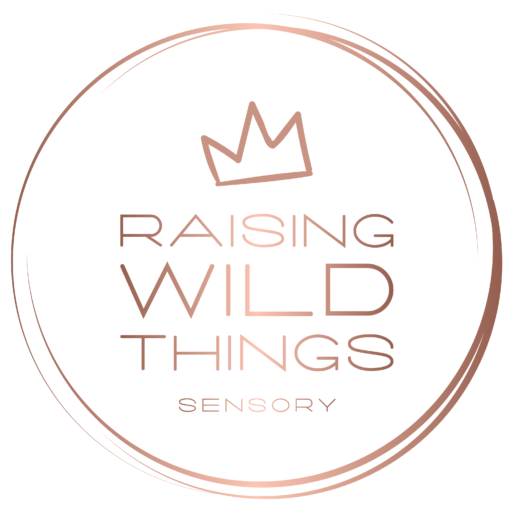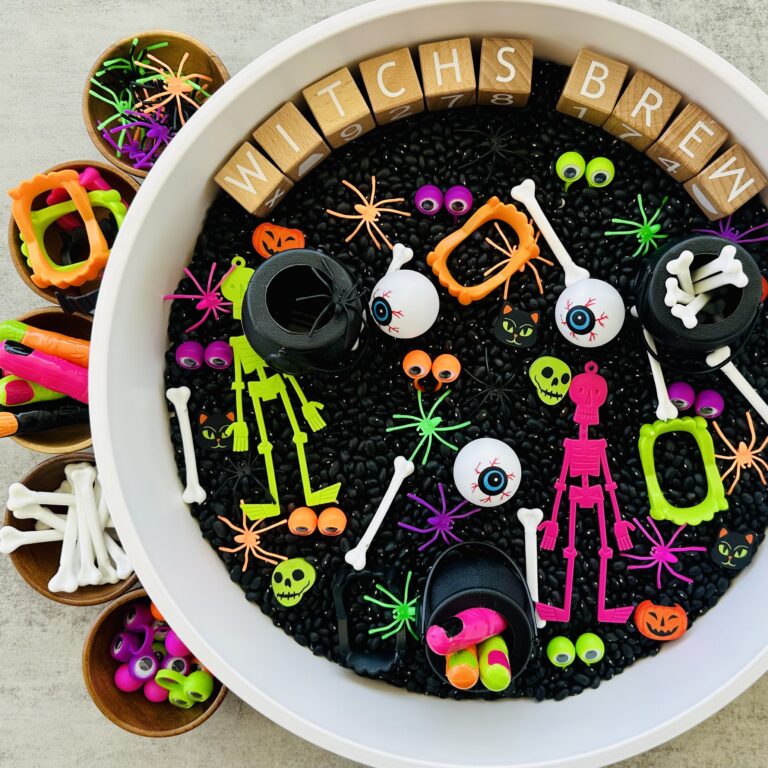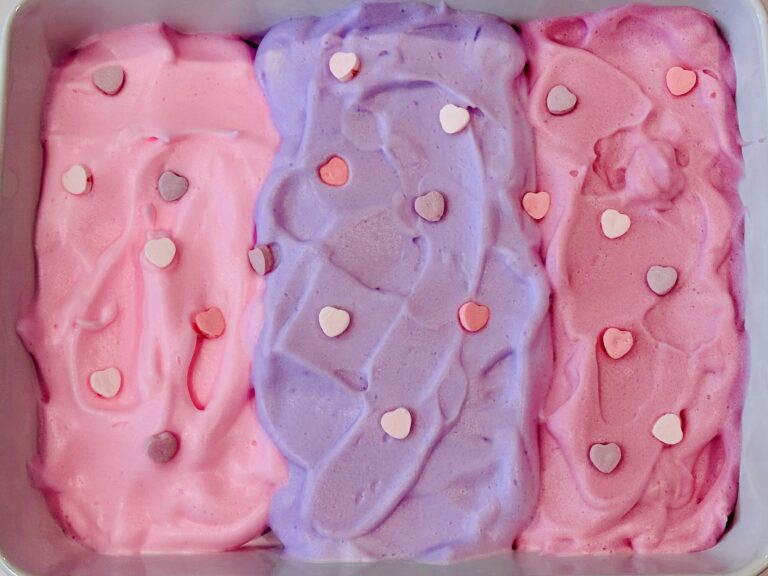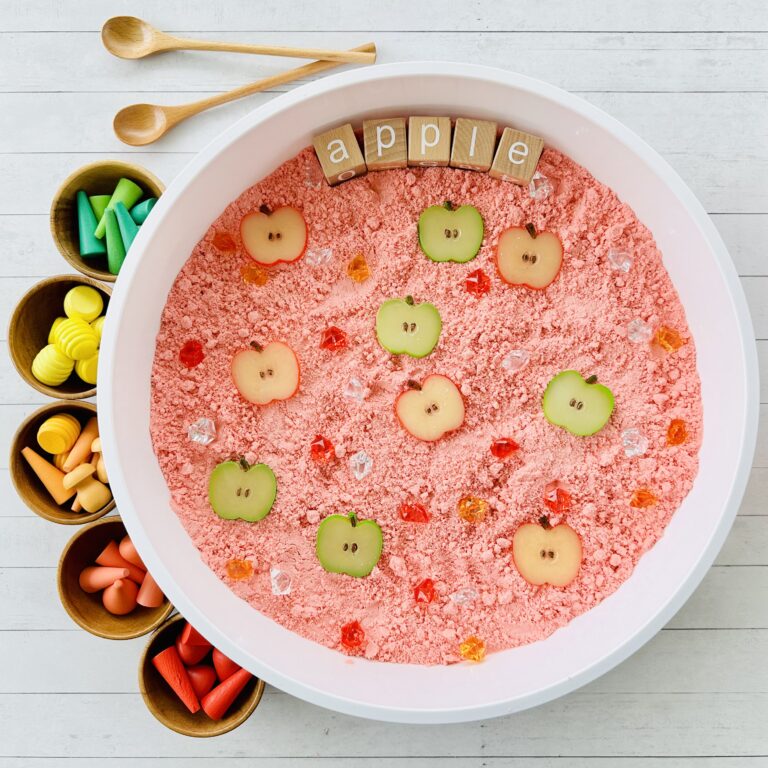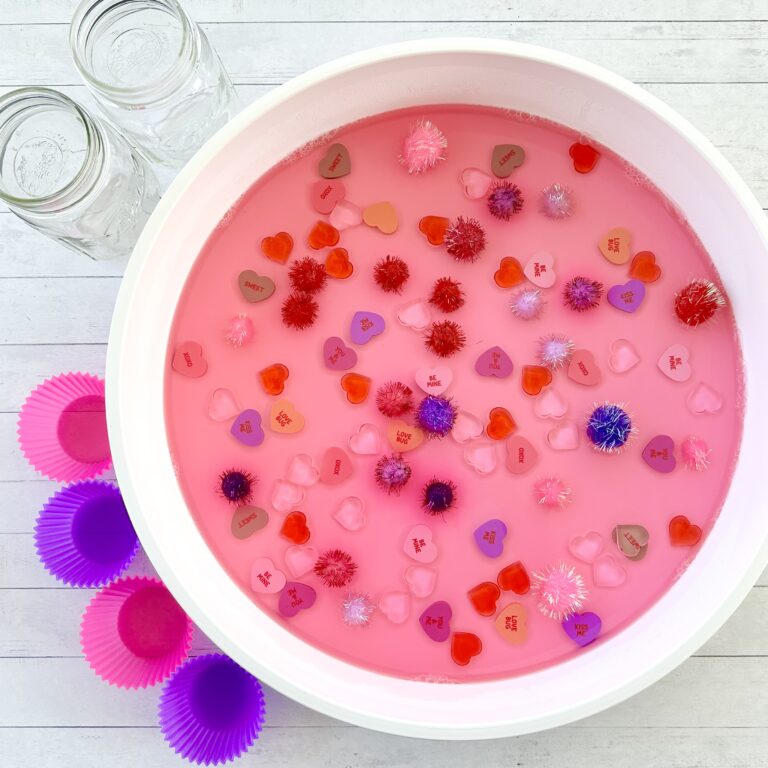Awesome Painting Ice Cubes Sensory Bin Activity
Discover the ultimate indoor art and sensory activity for kids—painting ice cubes! Easy to set up, fun to create, and packed with science. Perfect for toddlers, preschoolers, and kindergarteners!

Always supervise children during sensory play. See full disclaimer here. This post may contain affiliate links, which means I may earn a small commission if you make a purchase through these links, at no extra cost to you. As an Amazon Associate, I earn from qualifying purchases. I only recommend products I personally use and love! You can read more about my disclosure policy here.
If you’re searching for a quick, easy, and seriously fun activity, painting ice cubes is the answer!
This creative project offers a unique blend of art, science, and sensory play that keeps kids entertained and learning—all with minimal setup.
Not only will your kids have a blast, but they’ll also get a chance to explore color mixing, experiment with melting ice, and develop fine motor skills. It’s an all-in-one win!
What Is Painting Ice Cubes?
Painting ice cubes is exactly what it sounds like, kids use paintbrushes and washable paint or watercolors to turn plain ice into colorful works of art.
The catch? The ice keeps melting and moving as they paint, creating a sensory-rich experience that combines both creativity and science. This unexpected canvas is especially exciting for little ones because they get to explore textures, temperatures, and colors in new ways.
Plus, it’s perfect for any season. Its one of our favorite summer sensory activities and winter sensory bin ideas!
Painting Ice Cubes Sensory Bin Activity

Supplies You’ll Need
You likely have everything you need at home already, which makes this activity even better! Here’s a simple list:
- Ice cubes: A bag of ice or some from your freezer works great.
- Watercolors: Watercolors or washable paints are ideal.
- Paintbrushes: Go for thick brushes that help spread paint easily.
- Jar of water: For rinsing brushes and thinning out the paint.
- A sensory bin (or any container big enough for your child to play in). These are my favorite options: a sensory bin with lid for a smaller setup, or a larger sensory table for more expansive play.
Check out our list of essential sensory bin supplies to have on hand, making it easy to set-up multiple different sensory bins in seconds!

The Set-Up
This activity scores major points for being super quick to set up. No fancy prep, no hours of setup—just an easy way to keep the kids busy and creative. All you have to do is:
1. Dump the ice cubes
Fill the bin, tray, or whatever container you’ve chosen with ice cubes.
2. Set out the paints and paintbrushes
Arrange the paints and brushes near the container, making them easy to reach.
3. Add Jars of water
Set out jars of water for rinsing the brushes or diluting the paint as needed.
4. Let the Fun Begin!
You’re ready to go! Once the paintbrushes are in hand, let the kids take over. They’ll love exploring the cool, slippery surface of the ice and seeing how the paint behaves.
There are no rules here! Watch as they mix colors, cover cubes with swirls of paint, and discover how different amounts of paint create different effects:
Encourage the kids to talk about what they see. “Look, the yellow and blue made green!” or “The ice is getting smaller!” These observations lead to exciting moments of learning about color theory and the science of melting ice.

Tips for a Smooth Painting Ice Cubes Experience
Here are a few tricks to make sure everyone enjoys the painting ice cubes activity to the fullest:
- Don’t overcrowd: Give each child enough space to paint. It’s best to have 2-4 kids working at the bin at a time so they’re not competing for space.
- Scoop and rotate the ice: Once the top layer is painted, scoop up the ice cubes from the bottom of the bin and place them on top for a fresh canvas.
- Use thick brushes: The thicker the brush, the easier it is to spread the paint on the slippery surface.
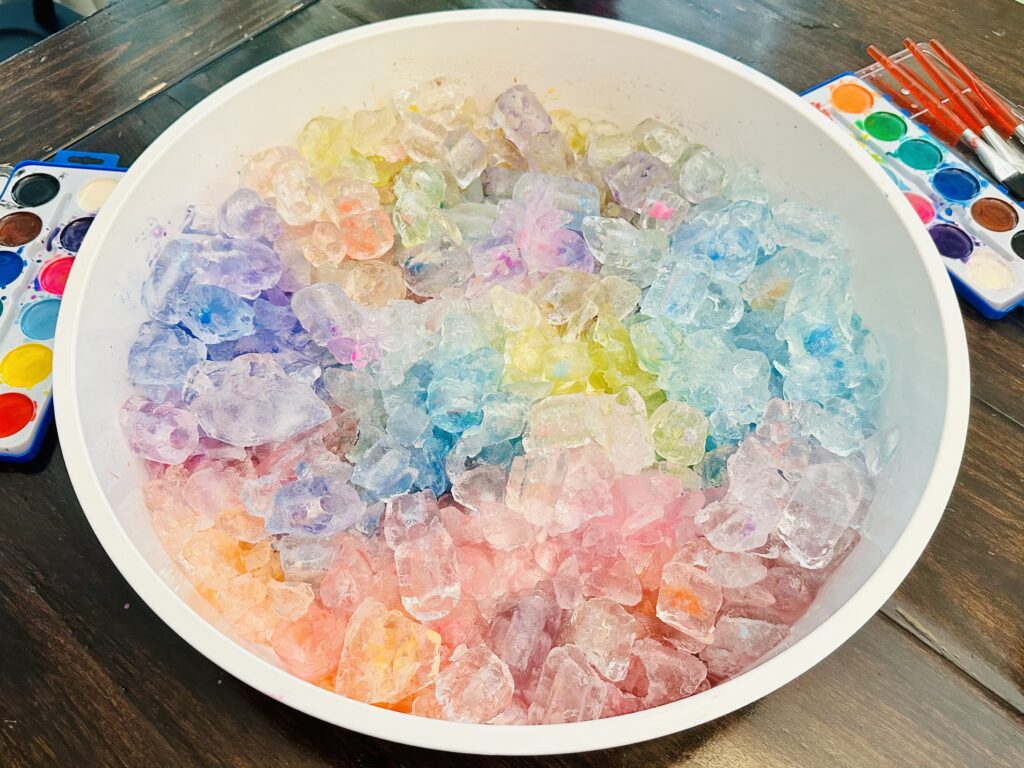
Clean-Up Tips
Worried about the mess? Don’t be! The clean-up after painting ice cubes is super easy:
- Dump the melted ice: Once the kids are done, you can either let the ice melt completely and dump the water or scoop out any leftover cubes.
- Rinse off any trays or bins: A quick rinse will get rid of any paint residue, especially if you use washable paints.
- Keep a washcloth handy: For sticky little fingers, having a wet washcloth nearby will make clean-up even easier.

What’s Happening? The Science of Painting Ice Cubes
This activity isn’t just artsy—it’s sciencey, too! While painting, kids are learning a lot without even realizing it:
- Color mixing: Kids mix primary colors to create new ones. They get to experiment with blending colors directly on the ice and see how different shades come to life.
- Melting and freezing: It’s a great way to introduce concepts like solid vs liquid and temperature change. They observe ice turning from a solid into a liquid, watching firsthand how temperature and water work.
- Sensory exploration: The cold, wet texture of the ice combined with the slick feel of the paint provides a rich sensory experience. Plus they work on fine motor skills handling paintbrushes and navigating the slippery surface of the ice.
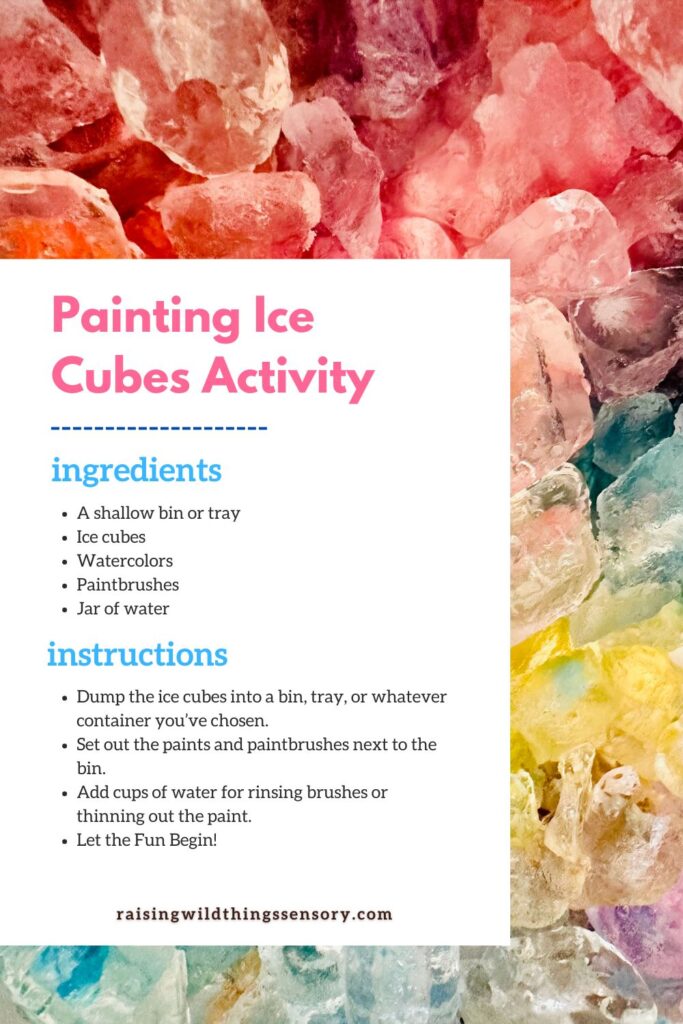
Why Painting Ice Cubes Is a Must-Try
The next time you need an easy, fun, and educational activity, give painting ice cubes a shot. Whether you’re filling a hot summer day or creating an indoor winter wonderland, this activity keeps kids engaged, learning, and having a blast. Plus, you’ll love how quickly it sets up and how easy it is to clean up.
Grab some ice, pull out the paints, and let the colorful fun begin!
Recommended
- The Best Summer Sensory Activities For Kids
- The Best Ocean Sensory Activities For Kids
- 4 Recipes: How To Make Taste-Safe Sensory Mud And Dirt
- 17 Recipes: The Best DIY Sensory Bin Fillers
- How To Make a DIY Mermaid Sensory Bin
- How To Make Mermaid Fluffy Slime (No Borax!)
- How To Make A Watermelon Moon Sand Sensory Bin
- How To Make A Watermelon Colored Rice Sensory Bin
- How To Make Awesome Summer Watermelon Slime
- How To Make Lemonade Colored Rice Sensory Bin
- How To Make An Erupting Lemon Volcano
- How To Make Lemonade Slime (No Borax!)
